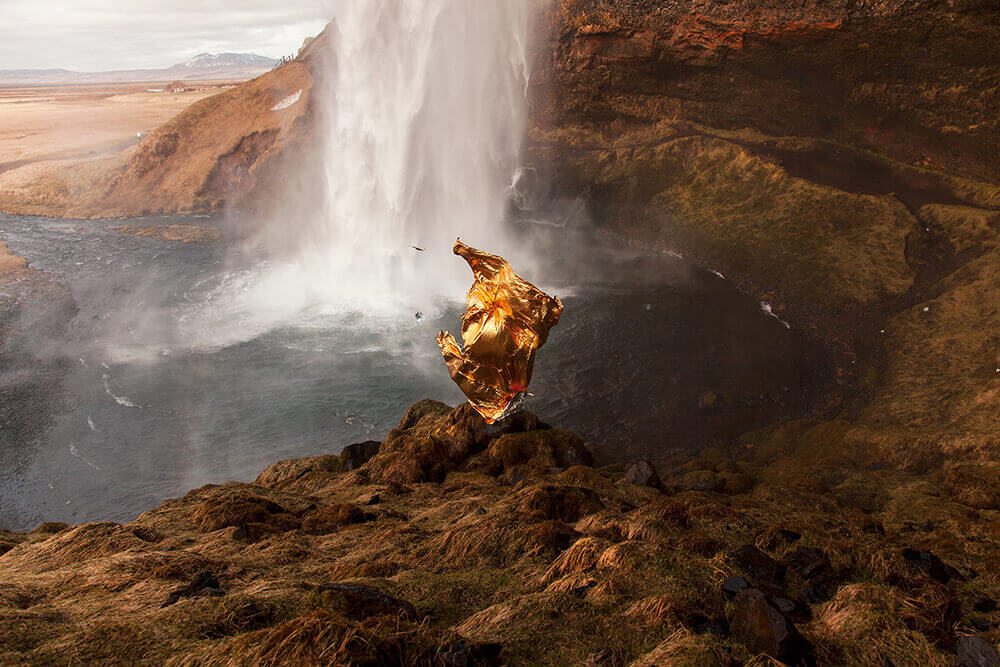INTERVIEW
Magnificent Elusiveness
WITH GIUSEPPE LO SCHIAVO
An interview with Giuseppe Lo Schiavo
“I am full of contrasts and weak points but I don’t feel any shame about showing them through my projects. For me, photography is a way of experiencing freedom”
Earlier in the year, Giuseppe Lo Schiavo won our Open Call – the final theme of our last edition – with his dreamlike alien form set against a stunning glacial landscape. Judge Brian Clamp, owner and founder of New York gallery ClampArt, praised it for the craft on show, describing it as ‘otherworldly’. Belatedly, we put some questions to Giuseppe and his answers were fascinating; jumping between his working process, how London might change outside the EU, his strengths and flaws, and how Italy can be described as a ‘lasagna of creativity’!
In your series ‘Wind Sculptures’ you capture human figures – gorgeous and ambiguous forms, against vast and dramatic landscapes. Can you tell us a little bit about the concept behind the work?
Wind Sculptures is an experimental series of photographs that depict unpredictable forms that resemble sculptures, created by the wind, that only the a high-speed camera can capture and keep forever. Under an emergency blanket, I am interacting with the wind in order to create dramatic and voluminous shapes in a performance with ever-changing results. It is a collaborative process between me and nature and that’s why I try to stage my photographs in uncontaminated, windy places all around Europe. I imagine this collaborative process as a way to create unpredictable forms of beauty. Beneath the foil, I feel like a rock, sculpted in an accelerated process by the wind and the water.
The process is interesting, and you’ve taken images all across Europe – Italy, France, Greece, the UK… Can you describe your method? What kind of research goes into the environments you choose, and how you then work once on-location? Is it a collaborative process, or do you act as both subject and photographer?
As a first step, I try to find inspiring and pristine places with notable windy spots. That’s why half of my series is taken in Iceland, a beautiful land where you can interact with the powerful wind generated from a waterfall or you can step on a glacier and be part of the spectacle.
I prepare the blanket before visiting the site, in my studio, combining around 8-10 blankets together in order to create a unique foil of approx. 30 square meters. I usually work with at least an assistant – I set the tripod with the camera on and then I go on stage with my blanket. There are cases though, where someone else is covered up with the blanket; in one example at Glacier Paradise, I was shooting at 2900m altitude in Switzerland during a snowstorm, and I couldn’t act both as subject and photographer. I had to be fast, so a friend of mine is under the blanket.
At Jokulsarlon glacier lagoon in Iceland I risked my life by stepping on the very fragile iceberg platforms. The salty lagoon water was -10 degrees Celsius and the closest city was 7 hours driving away, but I was determined to shoot in this location. The entire experience was extraordinarily overwhelming, standing in the middle of a glacier surrounded by seals. There are experiences that you cannot miss in life and that was one of them for me.
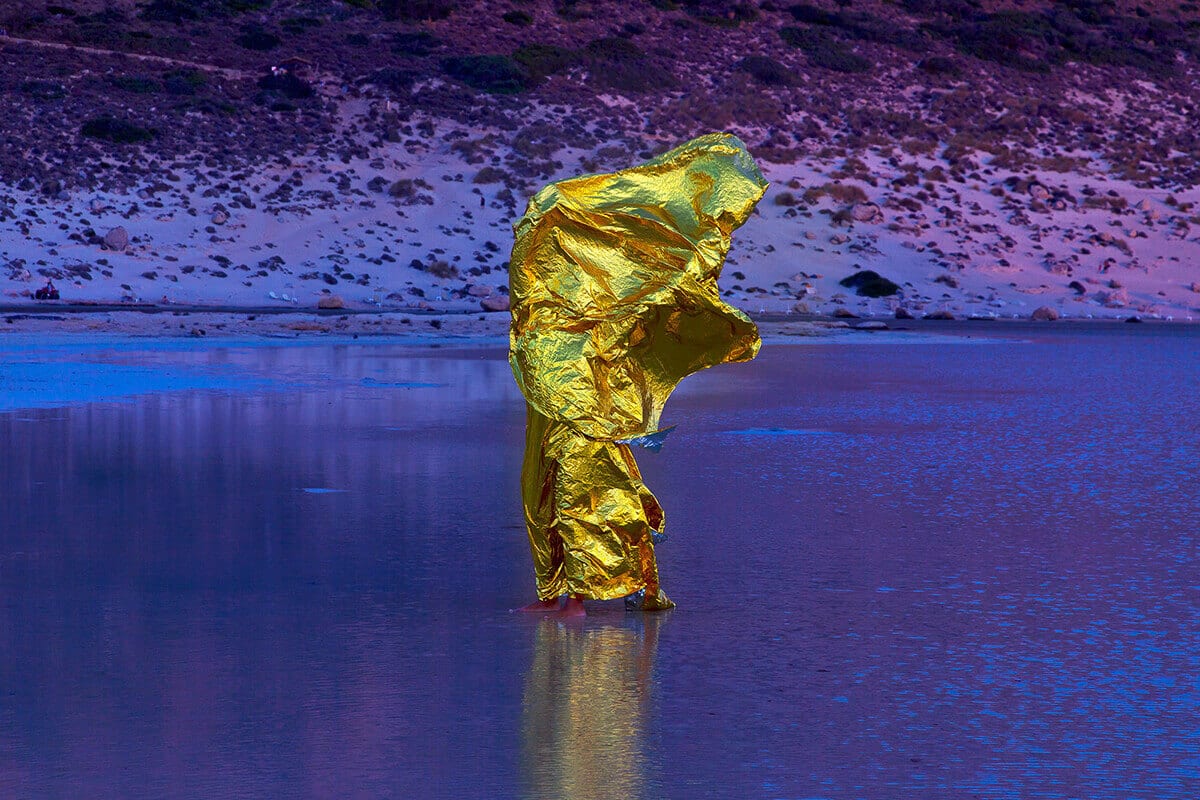
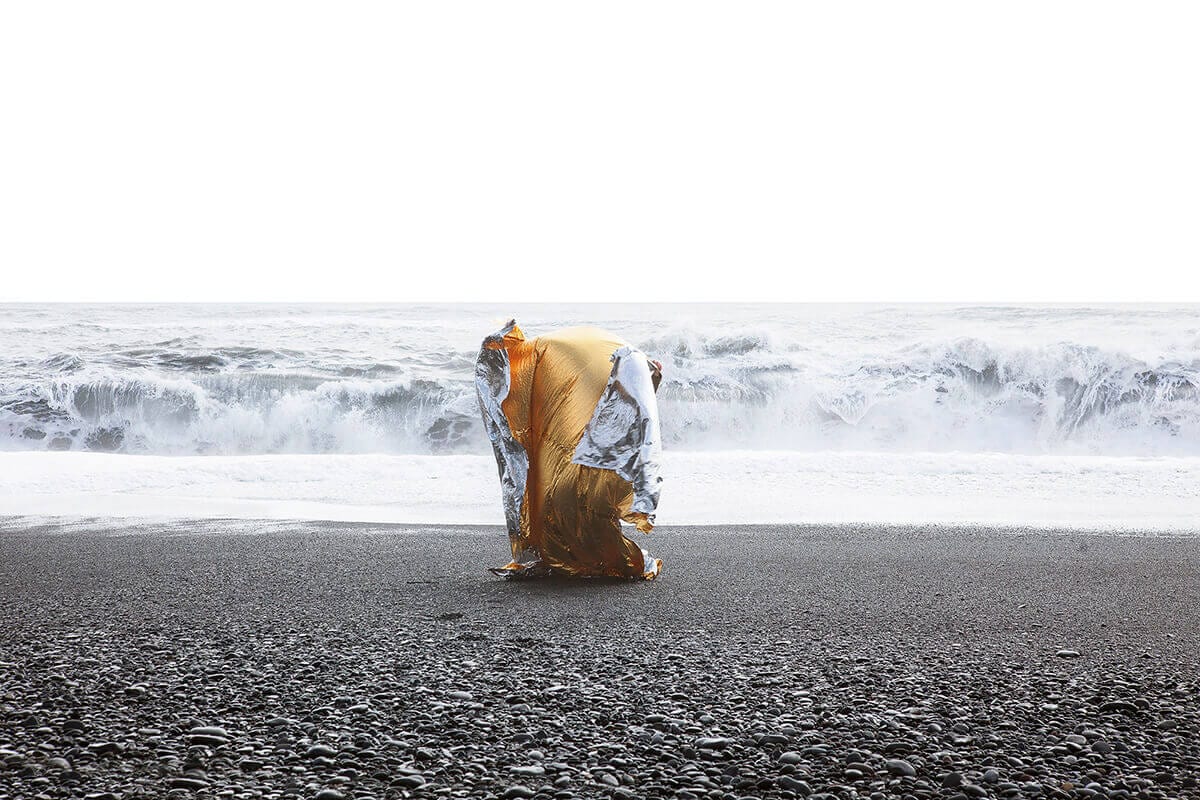
You’ve taken videos of these performances, as well as the still images that make up the photographic series. For a practice that is so theatrical – spontaneous and ever-changing – how do you go about selecting the ‘decisive’ frame? Is it a case of taking many images and post-editing, or does this selection happen ‘in the moment’?
That’s actually one of the most complex phases of my project. I look at the pictures only after the shoot because I need my big computer screen to start the selection process. I usually take 25 images per seconds, for a total of about 900 images per scene, so it’s a very frustrating moment when you need to select just one or two shots among all those striking images. This process takes weeks because I need time between the first and the final selection. I want to be sure there are no external influences interacting with my decisions. I discovered that when I’m in a good mood I tend to select the most appealing and symmetrical shapes, while when I’m low-spirited I tend to choose the more edgy ones, or the ones with more imperfections, like the ones at the end of every photo shoot where the foil is partly destroyed by the power of the wind. I am braver when I am melancholic. I work a lot with my instinct. It’s my duty as an artist to filter the images based on my personal intuition.
The one constant in the series is the gold foil – a material used as thermal blankets in many contexts, but notably in recent times to warm migrants landing on European shores from the sea. Such a material must clearly be an aesthetic choice, but is there a political message, or reaction to the migrant crisis infused in your work too?
My brother works as an official in the Italian marine Coast Guard in Calabria, southern Italy, and he has participated in many migrant rescue missions, saving the lives of thousands of migrants coming from North Africa every year. The first time I saw the emergency blanket was when I assisted him at the disembarkation of 120 migrants in the Port of Vibo Marina in Italy. The first thing I noticed was this beautiful and sparkling gold coating blanket that everyone was wearing, a reflecting mantle that was symbolizing salvation, for those who had made it.
So I associated this blanket as a symbol of salvation and I extended the message, introducing it in a collaborative project between man and nature. We can only save this planet earth if we understand that nature is a system of which we are all part, we are not a separated entity. If we don’t respect our environment we are betraying our essence. When I interact with the wind with my blanket I am sending a message that we are all connected, we just need to collaborate more in order to create beauty and not disruption.
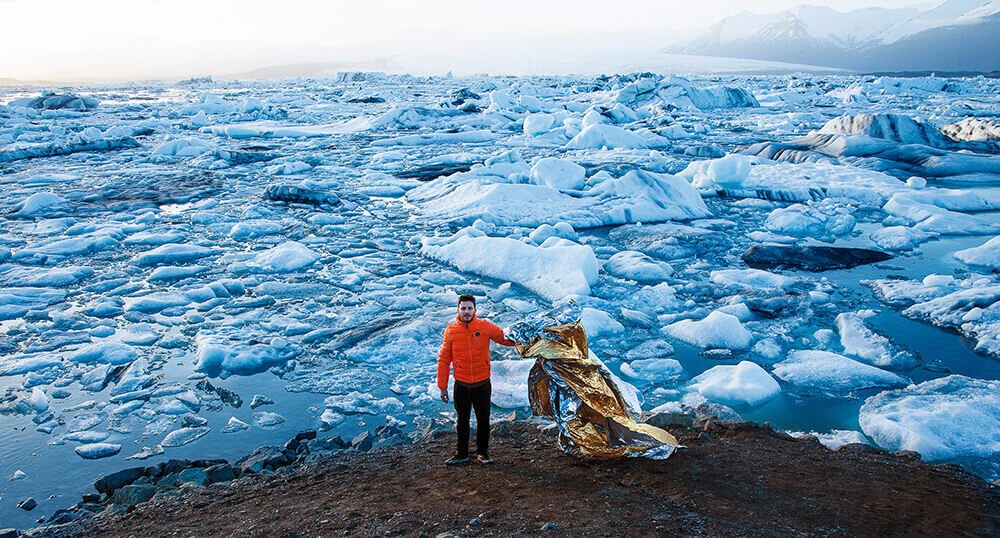
Backstage in Iceland
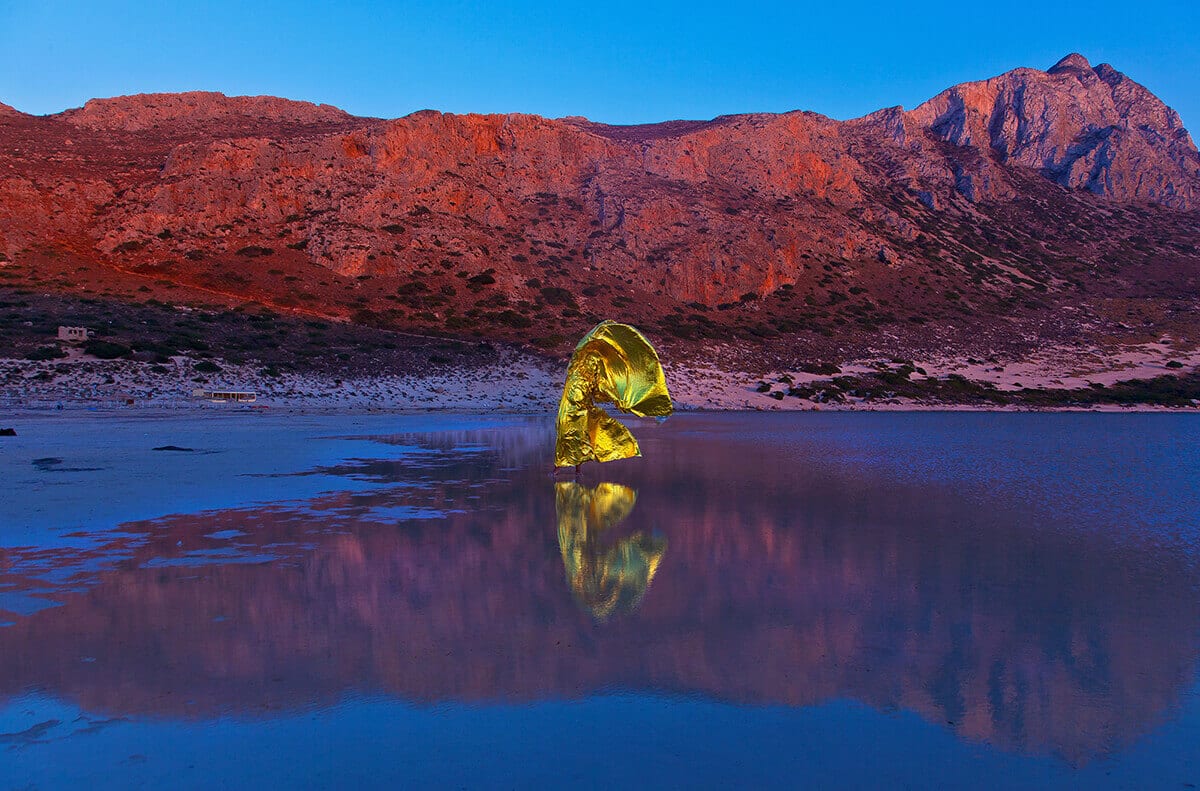
Have you concluded Wind Sculptures, or will the series continue? Is there an end-point in mind?
Wind Sculptures is a traveling project that I am continuing. I want it to be a long term side project that will evolve and maybe change with time. I am always looking for new places where I can introduce the project. For example, I recently discovered how fascinating volcanic areas are and therefore I have planned an upcoming shoot at the Etna volcano in Sicily. Since those projects require a significant amount of funds and resources, I am also looking for potential sponsors that could contribute to the production of my projects.
Wind Sculptures has also taken me in different art directions; I started experimenting with installation art in big public spaces. I used the foil as a material for a 350 square meters installation in Bologna in Italy where I covered an entire decadent facade in front of the Mast museum.
Your work is impressively experimental and varied, with sensibilities from your background in architecture evident. There are elements of graphic design, digital arts, collage and performance alongside more traditional photographic techniques. Do you feel an urge, or indeed a requirement, to specialise somewhat, or will the work you produce continue to be so eclectic?
That’s a very interesting question for me. I know it’s a bit confusing sometimes having so many different approaches in my research. For a long period I was feeling dissatisfied about the nonconformity of my work, but now I accepted that this is actually me, in all my contradictions. My portfolio is also a reminder of my evolution as an artist. I don’t want to be forced to do the same thing for all of my life or else I will get demotivated. As a person, I constantly evolve and change and as a result that has a radical impact on what I produce.
While we grow up our experiences have the power to influence and change the way our brains process information and hence our creativity. With all the influx of information and the rapid changes that occur in our society we are still failing to define and confine contemporary art – it is magnificently elusive, just like my work. I am full of contrasts and weak points but I don’t feel any shame about showing them through my projects. For me, photography is a way of experiencing freedom.
It seems like Italy is at the vanguard of young photographic talent at the moment – at least through Life Framer we see more gifted Italian photographers than its population in a global context might warrant. Do you sense this as well? And can you point to any reasons for it? I have always thought that having such a rich art history must have some influence…
Growing up in Italy affected my sensibility in art. Although most of my series are experimental, you can always find elements of classicism in them as in almost every contemporary Italian artist that has studied in Italy. Historically, Italy has been one of the most productive countries in art history and thus art is part of our tradition. Since the Roman empire, we were taught to consider art as a form of cult. Later on, the economic power of the Vatican gave the possibility to many artists to create their masterpieces and provided financial support for art education. It is all in our DNA and if you mix this with the contemporary frustration – provoked by the recent economic crisis – and a good dose sun every day that’s where you have the perfect recipe for a multi-layered lasagna of creativity!
And finally, you’re now in London. How is that influencing your practice?
Living in London changed me a lot, so much that I had a creative block last year because I couldn’t recognize myself and I had to stop to reorder my ideas and focus on the future. This year I finally got a very nice studio and I’m now more motivated than ever to continue working in this amazing city. London is currently an international creative hub. However, I don’t know what will happen after Brexit, if it will remain as appealing as it is now for young international talents. I am also a big supporter of the European project so if in the next two years the atmosphere in London begins to change I will consider moving elsewhere.
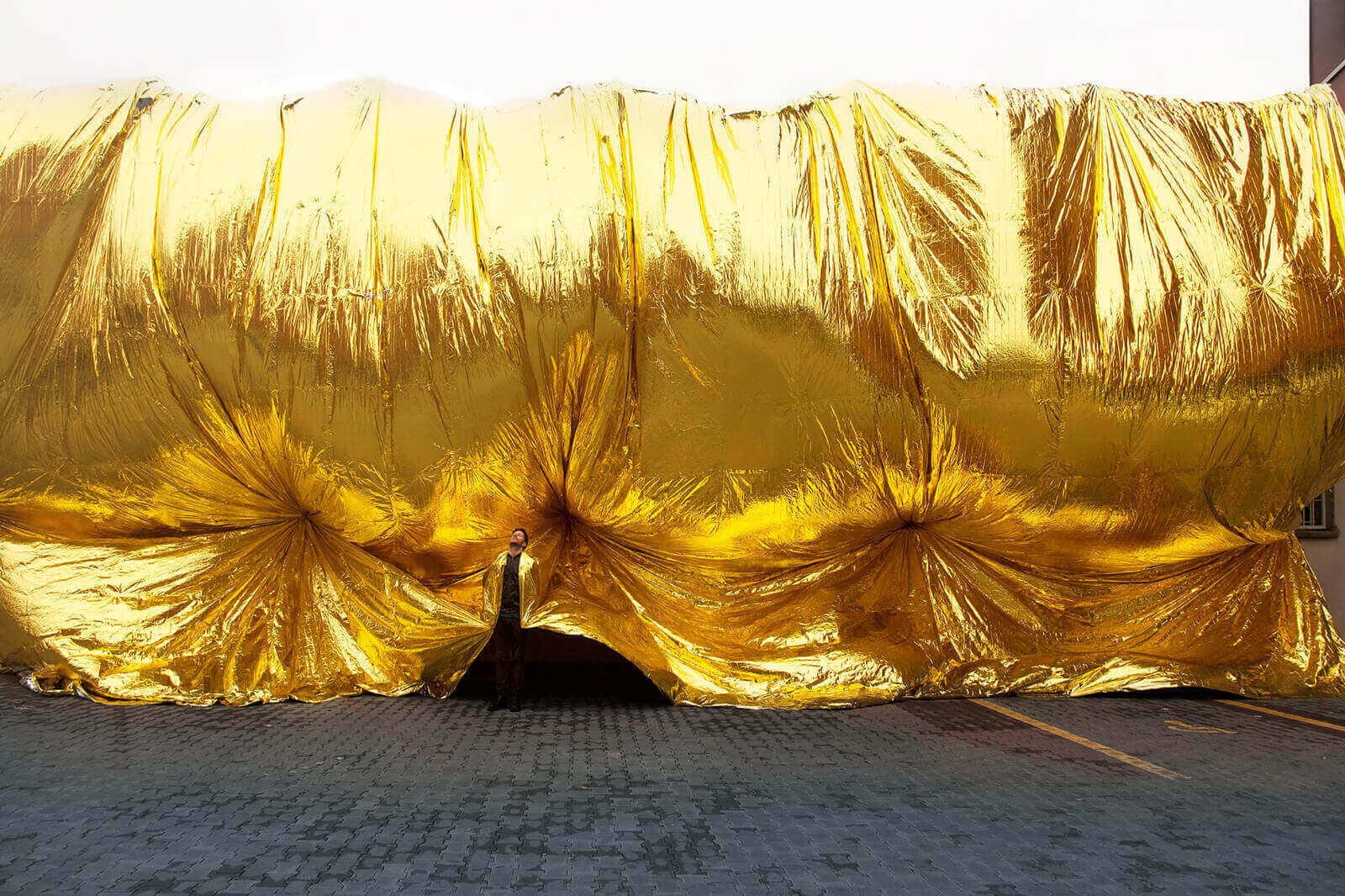
Mast Museum installation, Bologna
All images © Giuseppe Lo Schiavo
See more at www.giuseppeloschiavo.com
